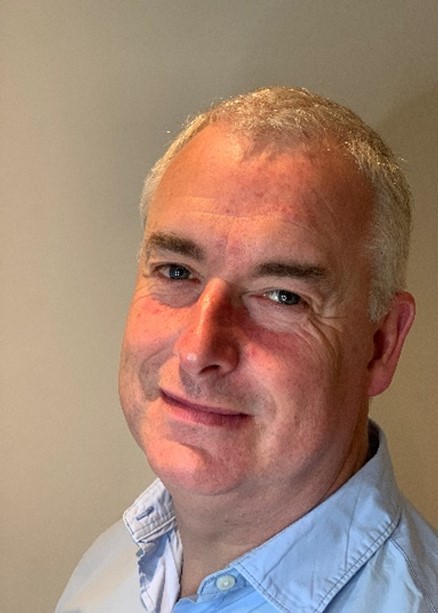The SIAM Health Assessment is now live and you can complete it for FREE through our website. The Assessment was created by almost 30 subject matter experts, from different location, different time zones, speaking different languages and all having different opinions and backgrounds.
Here, Ian Groves, one of the authors for the Governance & Strategy section of the SIAM Health Assessment gives a better understanding of the prospect of undertaking the SIAM Health Assessment as something that should be embraced and enjoyed!
Thank you Ian for sharing this blog with us!
Start talking about assessment, and almost immediately most people start to experience feelings of anxiety and fear.
Not until I started to study this topic in more detail, did I realise that this is an actual thing with a proper medical name: atychiphobia. It’s a psychological construct reflecting “apprehension about others’ evaluations, distress over negative evaluations by others, and the expectation that others would evaluate one negatively“(1).
Who knew?
So, it’s hardly surprising then that the prospect of an assessment strikes fear into the hearts of many, but should they really be afraid?
In this blog I’d to like to explore the more positive sides of assessment. It should be about baselining the current situation, identifying what could be done better and then providing support and guidance for improvement.
Clearly the ‘human condition’ will always try to stop us opening ourselves up to be criticised and our perceived weaknesses brought to the surface, and this must be considered within any assessment.
Having recently been involved in the development of a SIAM Health Assessment with Scopism and the folks at Kinetic IT, the ambition was to support organisations with their own individual SIAM journeys.
After all, trusting your own opinion is somewhat fraud with subjectivity. What you consider to be ‘good’ may be lacking in someone else’s eyes. Thus, a globally defined assessment can bring a level of objectivity to this exercise. I know from experience that it is extremely difficult and challenging to achieve consensus even within a peer group of like-minded and globally influential SIAM Subject Matter Experts.
If, like me, you search on-line for ‘assessment’ then you will come across a lot of interesting results from the education sector. Which, when you think about it makes total sense and I’m surprised that I haven’t made this connection before.
My other ‘light-bulb moment’ was the realisation that an assessment isn’t a test. An assessment generates insight, understanding and outcomes, and none of them is necessarily wrong or incorrect. A test on the other hand tends to arrive at a pass/fail result which will do nothing to allay our anxieties.
If we explore further this foray into the world of education, we’ll find a very interesting model which splits assessment into two main types:
Formative, which is further subdivided into:
- Pre-Assessment which is ‘finding out’ and is diagnostic in nature
- Ongoing assessment which is ‘checking-in’ and occurs at various points along the learning cycle
Summative, which is ‘making sure’ and occurs at the end of the learning cycle.
Hang on, this doesn’t look scary at all!
In fact, I’m suddenly feeling quite excited to learn more and this looks encouraging to me.
With this new insight on how it should work, let’s return to the new SIAM Health Assessment. On reflection, it has clearly gone down the Formative path as described earlier. This feels right and supports the primary objective of the assessment and how it came together.
An effective assessment design must address the following key points:
- Why am I assessing
- What exactly am I trying to assess?
- How am I assessing?
- Who is best placed?
- When should I assess?
Each of these questions will of course mean different things to different organisations and will vary according to their position on their own journey to SIAM. However, there are some common elements which the SIAM assessment aims to address
Why?
- To understand the current baseline as compared to the SIAM framework and to find areas of improvement
What?
- A comparison against the SIAM practices as defined within the SIAM Body of Knowledge (BoK)
How?
- By using the new SIAM Health Assessment
Who?
- Either self-assessment or led by a SIAM consultant
When?
- Before you start, during and periodically throughout your SIAM journey.
The ‘wolf’ isn’t that scary after all…
Hopefully, I have been able to reassure you that the prospect of undertaking the SIAM Health Assessment is not something to be dreaded but embraced and enjoyed!
Why not enrich the experience further and call upon the skills of a SIAM professional who will be able to guide you through the process, expertly steer you through each of the sections and help you decide on the most suitable outcomes for you and your organisation?
About the author:

Ian Groves originally qualified as a pharmacist and after more than 10 years working in retail, decided that a change of career was needed. He was lucky enough to find employment with ICL, more than 20 years ago, and the rest, as they say, is history. He has spent these years developing his IT service management and consulting expertise and has worked extensively across Europe, before setting-up Syamic to provide SIAM consulting and training services. He is an accredited SIAM professional, specialising in the design and implementation of SIAM governance frameworks. It is this level of knowledge and experience which he hopes brings a level of real-world pragmatism to this SIAM assessment.
References:
- – Ph.D., Irena Milosevic; Ph.D., Randi E. McCabe (2015-03-03). Phobias: The Psychology of Irrational Fear: The Psychology of Irrational Fear.



